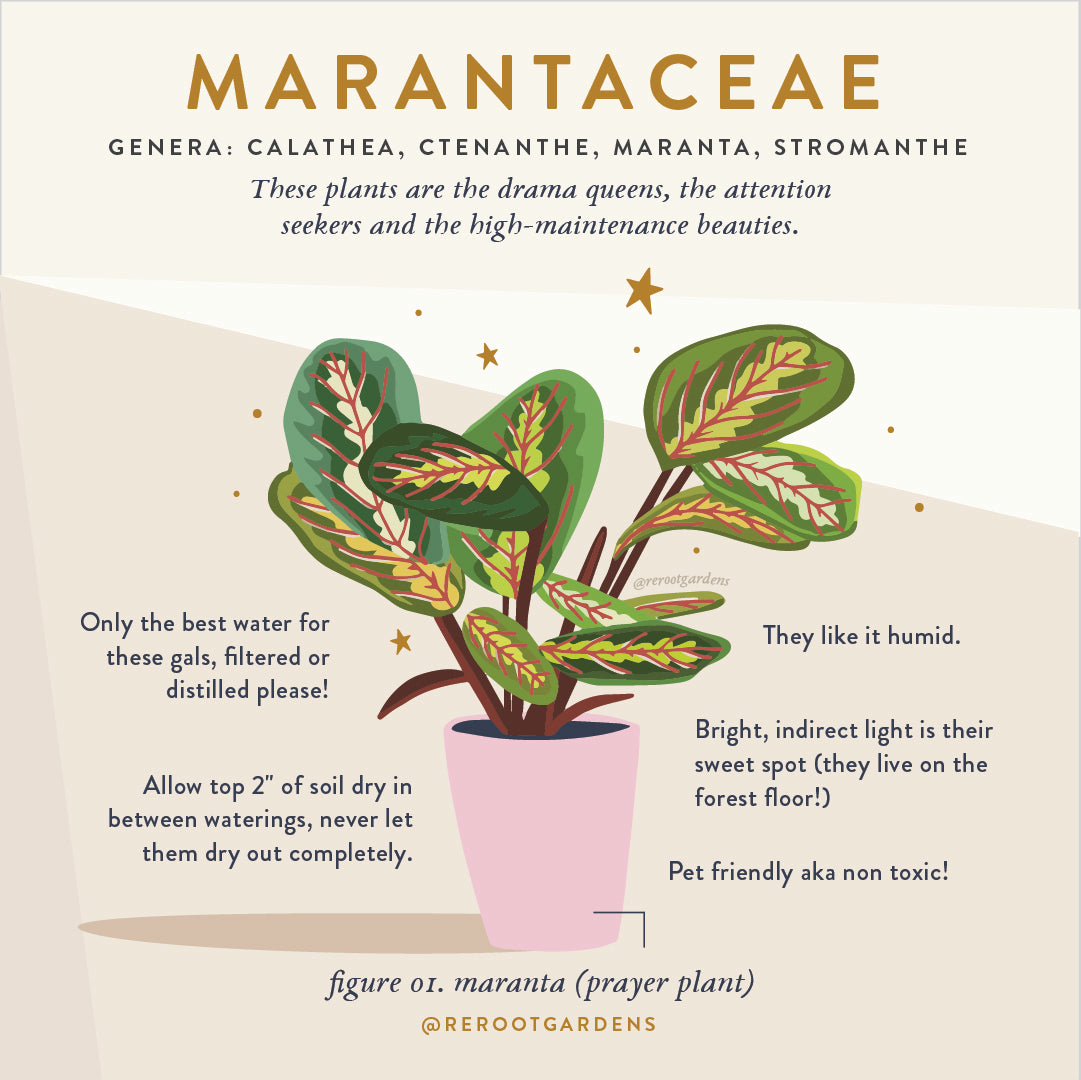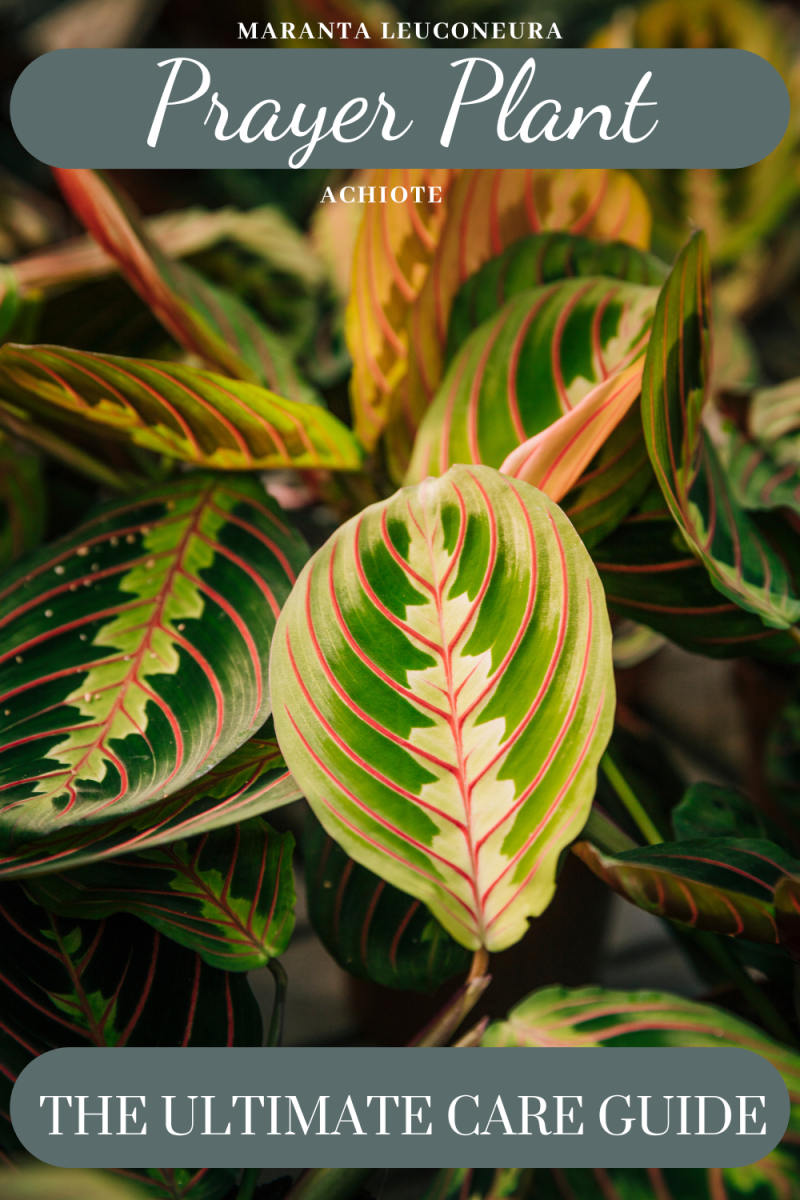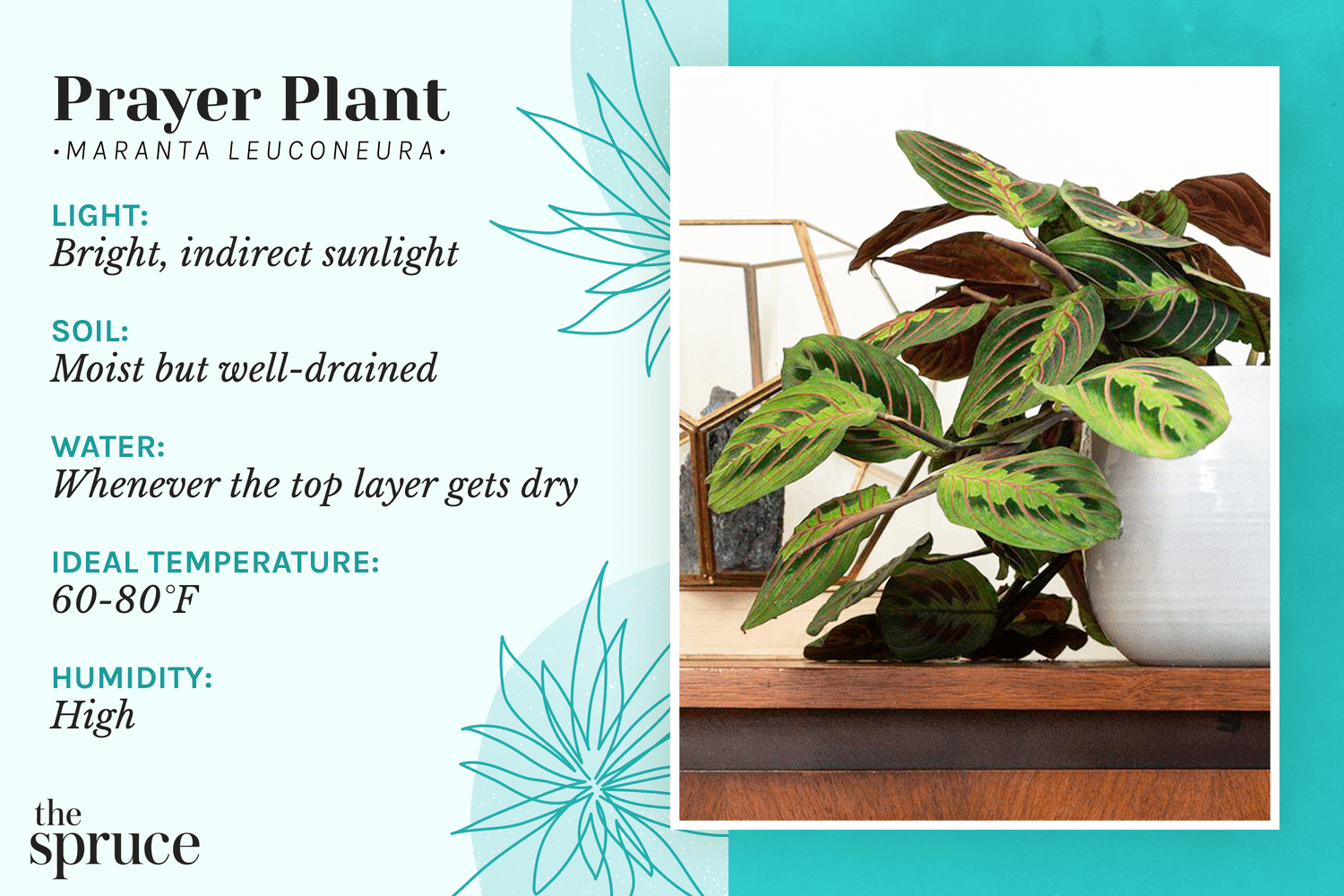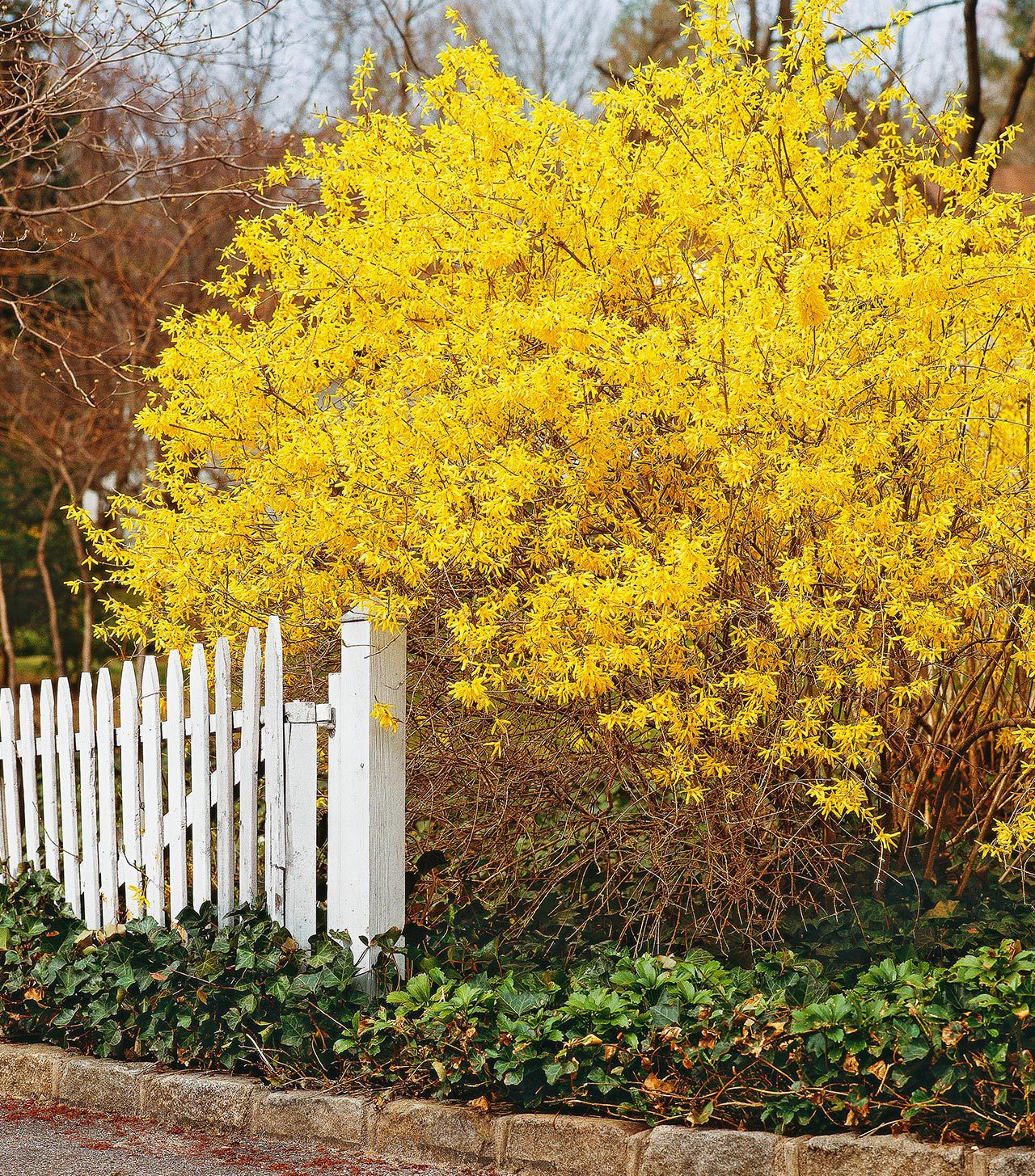Prayer plants need bright, indirect light and consistently moist, well-draining soil. They thrive in high humidity and warm temperatures.
The Prayer Plant, scientifically known as Maranta, is a popular houseplant admired for its striking foliage. Its leaves display unique patterns and colors that can add a touch of nature’s artistry to any indoor space. Proper care involves providing the right light, moisture, and humidity conditions.
Placing it in a spot with filtered light and keeping the soil moist but not waterlogged will ensure it flourishes. Regular misting or using a humidifier can help maintain the necessary humidity levels. By paying attention to these details, you can enjoy a vibrant and healthy Prayer Plant in your home.
Introduction To Prayer Plants
Welcome to the world of Prayer Plants, also known as Maranta plants. These tropical beauties are famous for their vibrant leaves and unique movement. Each evening, their leaves fold up like praying hands, giving them their name.
What Are Prayer Plants?
Prayer Plants are indoor plants with stunning, colorful leaves. They belong to the Marantaceae family. The most common types include the Red Prayer Plant and the Lemon Lime Maranta. These plants are low-growing and usually reach about 12 inches in height.
- Red Prayer Plant: Known for its dark green leaves with red veins.
- Lemon Lime Maranta: Features bright green leaves with yellow and lime patterns.
The leaves of Prayer Plants are oval-shaped and often have a striking, feather-like pattern. They thrive in warm, humid environments and need indirect light.
Origin And History
The Maranta plant family originates from the tropical forests of Central and South America. They are named after Bartolomeo Maranta, an Italian physician and botanist from the 16th century.
Prayer Plants have been cultivated for their beauty and unique behavior. Indigenous people used them for medicinal purposes. In recent years, they have become popular houseplants due to their vibrant foliage and easy care needs.
| Region | Significance |
|---|---|
| Central America | Used in traditional medicine |
| South America | Decorative plant |
Understanding the origin and history of Prayer Plants helps in appreciating their unique characteristics. These plants have adapted to thrive under the canopy of tropical rainforests. This makes them ideal for indoor environments with controlled light and humidity.
Ideal Growing Conditions
The Prayer Plant, also known as the Maranta, is a popular houseplant. To thrive, it needs specific growing conditions. This guide will help you understand the ideal environment for your Prayer Plant.
Light Requirements
The Prayer Plant prefers bright, indirect light. Direct sunlight can scorch its leaves. Place it near a north or east-facing window. If natural light is limited, use a grow light. Ensure the light is not too intense.
Temperature And Humidity
The Maranta thrives in warm temperatures. Keep the temperature between 65°F and 80°F. Avoid placing it near cold drafts or heat vents.
High humidity is crucial for this plant. Aim for humidity levels of 50% or higher. Use a humidifier or place a tray with water and pebbles nearby. Misting the plant regularly also helps.
Watering Needs
The Prayer Plant is a popular houseplant known for its beautiful leaves. Proper watering is vital for its health. Understanding the watering needs of the Maranta Plant can help it thrive.
How Often To Water
Water your Prayer Plant every 1-2 weeks. Check the soil first. It should be slightly dry before you water again. In summer, water more often. In winter, reduce the frequency. Use room-temperature water for the best results.
Signs Of Overwatering And Underwatering
| Condition | Signs |
|---|---|
| Overwatering |
|
| Underwatering |
|
Check for these signs regularly. Adjust your watering schedule as needed.

Credit: www.rerootgardens.com
Soil And Potting
Proper soil and potting are crucial for the health of your Prayer Plant. These plants thrive with the right soil mix and pot. This section will guide you on how to choose the best soil mix and the right pot for your Maranta plant.
Best Soil Mix
The best soil mix for a Prayer Plant should be well-draining. This helps prevent root rot. Use a mix of peat moss, perlite, and potting soil. This combination provides excellent drainage and retains moisture.
Here is a simple table for the ideal soil mix:
| Ingredient | Ratio |
|---|---|
| Peat Moss | 2 parts |
| Perlite | 1 part |
| Potting Soil | 1 part |
Mix these ingredients well. Ensure the soil is loose and airy. This will help the roots breathe.
Choosing The Right Pot
Choosing the right pot is essential for your Prayer Plant’s growth. The pot should have drainage holes. This prevents water from sitting at the bottom.
Here are some tips for selecting the right pot:
- Use a pot that is 1-2 inches larger than the root ball.
- Avoid pots that are too big; they hold too much water.
- Clay pots are good; they allow airflow to the roots.
Ensure the pot is clean before use. This prevents diseases and pests from affecting your plant.
Feeding And Fertilizing
Proper feeding and fertilizing are crucial for the health of your Prayer Plant. This helps the plant grow strong and vibrant. Knowing the right types of fertilizers and a proper feeding schedule is essential.
Types Of Fertilizers
Prayer Plants benefit from balanced fertilizers. Here are some options:
- Liquid Fertilizer: Easy to mix and apply. Provides quick nutrients.
- Slow-Release Fertilizer: Releases nutrients over time. Less frequent application.
- Organic Fertilizer: Natural option. Good for soil health.
Each type of fertilizer has its benefits. Choose the one that suits your lifestyle and plant needs.
Feeding Schedule
Follow a consistent feeding schedule for best results. Here’s a simple guide:
| Season | Frequency |
|---|---|
| Spring | Every 2 weeks |
| Summer | Every 2 weeks |
| Fall | Once a month |
| Winter | No feeding |
Spring and summer are growth periods. Feed your plant every two weeks. In fall, reduce feeding to once a month. In winter, the plant rests and needs no feeding.
Avoid over-fertilizing. It can burn the roots and harm the plant.
Pruning And Maintenance
Proper pruning and maintenance are essential for the health of your Prayer Plant. Regular care ensures vibrant leaves and a thriving plant. This guide explains when and how to prune your Maranta plant.
When To Prune
The best time to prune your Prayer Plant is during the growing season. This period is usually in spring and summer. Prune when you see dead or yellow leaves. Also, prune if the plant becomes too leggy.
Pruning helps in stimulating new growth. It also keeps the plant in shape. Avoid pruning during the winter as the plant is dormant.
How To Prune
Follow these steps to prune your Prayer Plant:
- Use clean, sharp scissors or pruning shears.
- Identify dead, yellow, or leggy stems.
- Cut just above a leaf node.
- Remove any brown or damaged leaves.
Here is a quick reference table for pruning tools and steps:
| Tools Needed | Steps |
|---|---|
| Clean, sharp scissors or pruning shears | Identify dead or yellow leaves |
| Cut above a leaf node | |
| Remove brown leaves |
Regular maintenance includes checking for pests. Also, ensure the plant receives adequate light and water. Overwatering can lead to root rot. Keep the soil moist but not soggy.
Keep your Maranta plant in a humid environment. Mist the leaves occasionally. This helps in preventing dry edges.
By following these pruning and maintenance steps, your Prayer Plant will thrive beautifully.
Common Pests And Diseases
The Prayer Plant, scientifically known as Maranta, is a popular houseplant. Despite its beauty, it can face problems from pests and diseases. Understanding these issues is crucial for maintaining a healthy plant.
Identifying Pests
Common pests affecting Prayer Plants include:
- Spider Mites: Tiny, red or brown, they create webbing on leaves.
- Mealybugs: White, cotton-like masses found on stems and leaves.
- Scale Insects: Brown or black, these pests attach to plant stems.
- Aphids: Small, green or black, they cluster on new growth.
Treatment And Prevention
Effective treatment and prevention strategies:
| Pest | Treatment | Prevention |
|---|---|---|
| Spider Mites | Spray with neem oil. Wipe leaves with soapy water. | Increase humidity. Regularly inspect and clean leaves. |
| Mealybugs | Use rubbing alcohol on a cotton swab. Spray with insecticidal soap. | Isolate infected plants. Keep plants dust-free. |
| Scale Insects | Remove manually. Apply horticultural oil. | Check plants regularly. Maintain plant health. |
| Aphids | Rinse with water. Apply insecticidal soap. | Introduce beneficial insects. Remove affected areas. |
Regular monitoring and quick action are essential for a healthy Prayer Plant.
Propagation Techniques
Propagating a Prayer Plant can be a fun and rewarding experience. There are two main methods to propagate your Maranta plant: stem cuttings and division. Each method has its own unique steps and benefits.
Stem Cuttings
Stem cuttings are a popular way to propagate Prayer Plants. This method is simple and effective.
- Choose a healthy stem with at least one node.
- Use a clean, sharp knife to cut the stem below the node.
- Remove the lower leaves to expose the node.
- Place the cutting in a glass of water.
- Ensure the node is submerged in water.
- Change the water every few days to keep it fresh.
- Once roots develop, transfer the cutting to soil.
Ensure the soil is well-draining and keep it moist. Place the pot in indirect sunlight.
Division Method
The division method is another way to propagate Prayer Plants. This method involves splitting the plant into smaller sections.
- Carefully remove the plant from its pot.
- Gently shake off excess soil from the roots.
- Identify natural divisions in the root system.
- Use a clean knife to separate the sections.
- Ensure each section has roots and leaves.
- Plant each section in its own pot with fresh soil.
Water the new plants thoroughly and place them in a spot with indirect sunlight. Keep the soil moist but not soggy.
| Method | Steps | Tips |
|---|---|---|
| Stem Cuttings |
|
Change water often |
| Division Method |
|
Handle roots gently |
Troubleshooting Issues
Taking care of a Prayer Plant can be a rewarding experience. But sometimes, problems can arise. In this section, we’ll tackle some common issues. Let’s make sure your Maranta stays healthy and beautiful.
Yellow Leaves
Yellow leaves can be a sign of several issues. Here are some possible causes and solutions:
| Cause | Solution |
|---|---|
| Overwatering | Allow the soil to dry between waterings. |
| Underwatering | Water your plant thoroughly until water drains out. |
| Lack of Light | Place your plant in bright, indirect light. |
| Low Humidity | Mist the leaves or use a humidity tray. |
Curling Leaves
Curling leaves indicate that the plant is stressed. Let’s find out why:
- Temperature Stress: Keep the plant in a stable environment. Avoid drafts and extreme temperatures.
- Low Humidity: Increase humidity by misting the plant. You can also use a humidifier.
- Water Quality: Use filtered or distilled water. Tap water may contain harmful chemicals.
- Pests: Check for pests such as spider mites or aphids. Use insecticidal soap if needed.

Credit: dengarden.com

Credit: houseplanthouse.com
Frequently Asked Questions
How Often Should I Water A Prayer Plant?
Water your Prayer Plant when the top inch of soil feels dry. Overwatering can cause root rot. Ensure the pot has good drainage.
What Light Conditions Do Prayer Plants Need?
Prayer Plants thrive in bright, indirect light. Direct sunlight can scorch their leaves. Low light can cause them to lose vibrant color.
Why Are My Prayer Plant Leaves Curling?
Leaves curl due to low humidity, underwatering, or too much light. Increase humidity and adjust watering and light conditions.
How Do I Increase Humidity For My Prayer Plant?
Increase humidity by misting the plant regularly, using a humidifier, or placing it on a tray with water and pebbles.
Conclusion
Caring for a Prayer Plant is simple with the right knowledge. Keep the soil moist, but not soggy. Ensure it gets bright, indirect light. Regularly mist the leaves to maintain humidity. With these tips, your Maranta will thrive and bring beauty to your home.
Enjoy the vibrant, healthy foliage year-round.




